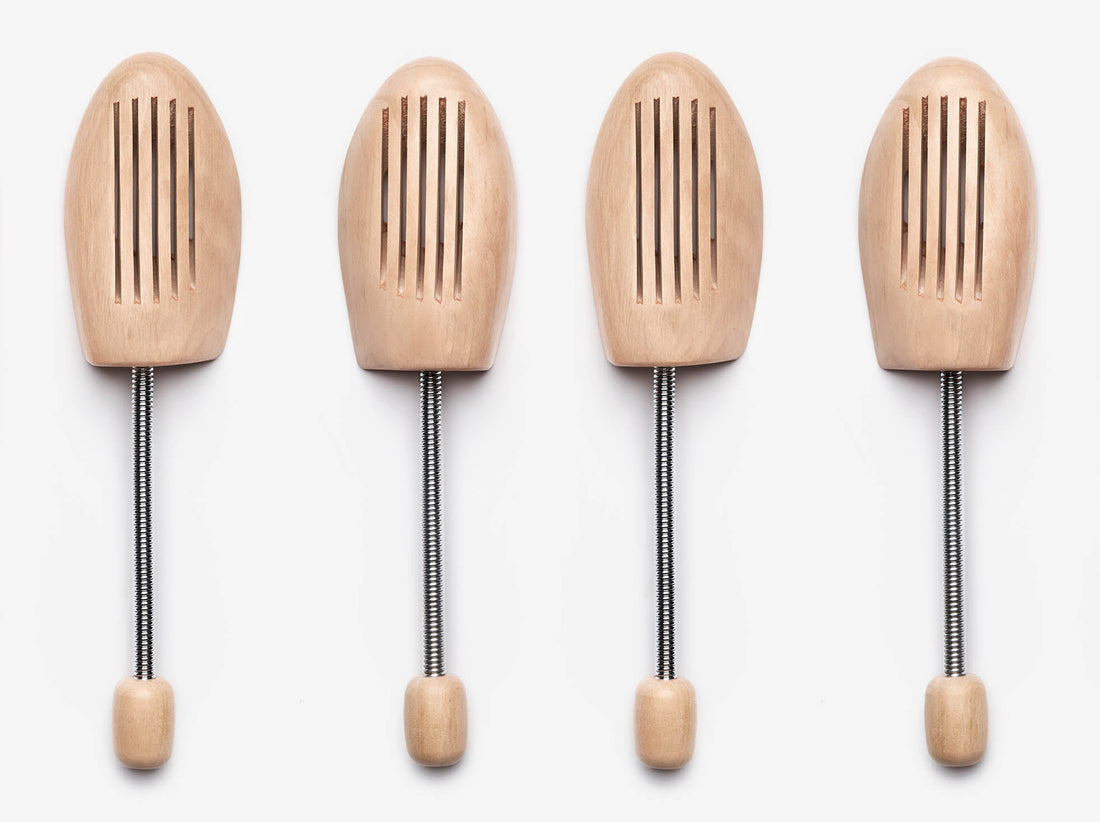If you’ve read the previous blog on Why You Need Shoe Trees, then you’ve understood the importance of shoe trees and the benefits in having even a few pairs for the maintenance of your favorite and most worn shoes (if you haven't yet, make sure you do by clicking here!).
It's great if you’ve already decided to take the step and invest in a few pairs, and although it would be ideal to have one pair of shoe trees for every pair of shoes, you can get away with a rotation scheme between your most worn pairs.
When the time comes to go ahead and purchase your shoe trees, you’ll notice there are a few options available.
What’s the difference?
Let’s break down the types of shoe trees into 4 main categories:
-
Economic Shoe Trees (price range may be between $15 - $30)
This category is a great option for your shoes that are at a price range below $200. It wouldn’t make much sense in using shoe trees that are more expensive than you’re actual shoes!
These shoe trees usually do not have a full wooden heel. They instead have a nob or a piece of thin wood that help to stretch out the shoe (like the Loake version in the image below). They are great for odor control and leather cracking, but are not as effective as the more expensive versions in maintaining the shoe shape.
The best type would be a rough cedar version as opposed to a varnished wood version. This is because the porous natural of the rough cedar wood will absorb the most moisture, while the varnish will not allow for the shoe tree to properly draw moisture from the leather and lining.
-
Quality Shoe Trees (price range may be between $25 - $50)
If your shoes are at a higher price point than $200, it becomes worthy to spend more on your shoe trees. Quality shoe trees are usually made with slots at the toe area which act as ventilators to assist in dissipating the moisture. They are also made with more wood and a longer crafted heel which is ideal for absorbing moisture and for odor control. Again, the best type would be rough cedar versions, they contain oils that are naturally anti-microbial and rot-resistant.
-
Lasted Shoe Trees (price will vary as these are bespoke)
If you have a very high-end pair of shoes that are north of $700, then they probably already come with their own bespoke shoe trees . These may come with the shoe, or are an option for purchase. This is the highest category of shoe tree as they take the exact shape of the shoe mould that the shoe was made with. They basically fill the entire inside of the shoe and draw out maximum moisture while maintaining the exact natural shape of the shoe (Crispinians specialize in this service and make various types of shoe trees like the one below).
-
Travel Shoe Trees (price range may be between $10 - $20)
Cedar shoe trees may be the best, but they are quite heavy and not practical for traveling. The perk of the travel shoe tree, in comparison, is the lightness of them. They are usually made of plastic and are a perfect option for traveling and maintaining the shape of your shoes while on the go (like the A Fine Pair of Shoes version pictured below). They are especially useful in keeping your shoes from getting squashed in your suitcase! There are wood version available too, although they won't be as lightweight and will be slightly pricier (like the Catch Cart Elliot version below)

Just remember, whichever type you decide to use, the most useful time to use your shoe tree is in the first hour or two after you’ve taken your shoes off. This is the time to draw out the most moisture which will assist the shoe to keep its normal form. After that, the shoe tree works to mostly maintain shape and help with odor.
Spending a little on a few shoe trees will go a long way in taking care of your shoes, and they are really worth the extra mile. If you are still hesitant about the splurge, it may be a good idea to start off with a travel shoe tree, test the waters and see the difference. Although not as effective as the wood versions, they will surely give you an idea of the benefits you will receive.
Now that you’ve got all the options, take your pick and use it as an easy way to keep your shoes in the best condition possible!
Signing-off: Rana Cheikha for The Shoe Advisor
// Get in touch here or by email at rana@ranacheikha.com for more insight, queries and information //

